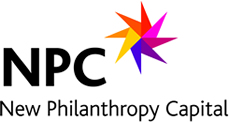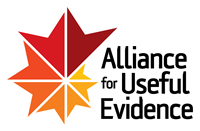Research project blog: Where we are now, where we could go and how we could get there
The ‘values, behaviours and practices of social impact analysts’ is the title of the research project that I have been carrying out during my six weeks at SIAA. When I first began work on it, the project’s broad scope dwarfed my limited understanding of the field and somewhat daunted my initial bullish enthusiasm. My interest in SIAA came from my belief in efficiency, in transparency and in accountability – words whose meanings and value can sometimes be lost in a world of excessive jargon, statistics that conceal reality, corporate self-aggrandisement and a culture that values constant innovation over reflection. Though I was aware of the principles behind it, my knowledge of the detail and practices of social impact analysis could generously be described as ‘basic’.
The question of what Social Impact Analysis is was a good question for me, and my research, to start with. Though the exact method is largely dependent on context, sector and methodology, the focus of social impact analysis is clearly placed on an analysis of the change that is created by the activities of an organisation or program and on the measuring of outcomes that are widely understood to be intangible. The value of social impact analysis is, according to the majority of interviewees, two-pronged and rests on its role in improving the effectiveness of an organisation or project in bettering the lives of beneficiaries and in communicating the successes or failings of the organisation or project to interested parties. On this section of the report, there was general consensus.
Where things started to heat up, was on the subject of the differences between evaluation and analysis. The research clearly established that people think there is a difference, but on the subject of what that difference is, answers struggled to find significant common ground. What did emerge is that, in different senses, social impact analysis is perceived as taking in a broader scope; it is regarded as a more detailed form of review than just ‘evaluation’. The negative associations with the ‘tick-box’ culture of bureaucratic appraisals seem to be particularly allied with ‘evaluation’ whereas analysis is seen to be taking the assessment to the next, more valuable and practical level. There were some interviewees who, though they saw the conceptual and operational differences between the two practices, questioned the practical relevance of becoming too entangled in semantic distinctions.
Though I have called the report ‘Where we are now’, it is as much about where the field of social impact analysts could be. If social impact analysis is to become a more recognized, sustainable and rigorous profession, further developments are needed. In order to probe one possible means by which this could happen, the research explored the current way in which practitioners perceive and use good practice guidelines. It transpired that, although people believe the principles behind good practice guidelines are important, many interviewees do not actually use any particular form of guidance preferring instead to rely on the internal documents of the organisation or on their own sense of good practice. It seems that it would be with much difficulty that we could look to develop good practice guidelines that would be practically applicable to all contexts and methodologies. Interviewees expressed similar concerns about the establishment of professional standards and the possible restrictions these would impose on an emerging and evolving profession. Participants expressed concern about standards that would make the practice exclusive or would involve paying a high fee for accreditation. Many interviewees made clear the need to establish a genuine demand from clients and funders for professional standards and, if developed, to do so with the help and consultation of practitioners.
As I began work on the project, it quickly became apparent that I was privileged to be in the position of listening to those who are far better informed than I will ever be, explaining this complex area of work. It has been with great interest that I have been given access to this exciting and emerging world and with eager trepidation that I have attempted to encapsulate the many different views, often diverse and impossible to summarize, of the people I have spoken to. Though the research has highlighted some of the differences in the uses and application of social impact analysis, this, I believe, is not something to be frightened by, but rather a clue to its very nature; the nature of a practice that is flexible and can be applied to many different contexts in many different ways.
by Research Intern, Sophie Pattison
These are some ideas from the research project. The full report is due to be published at the start of October.













You have some very interesting feedback here. I am particularly interested that you have included “behaviours” in your title and would like to hear more discussion about this. It is an important area for senior leaders to be considering. It is the commitment of the senior leadership - the setting of expectations and management of monitoring and evaluation - which is strongly influential in achieving behaviours that deliver rigorous social impact analysis.